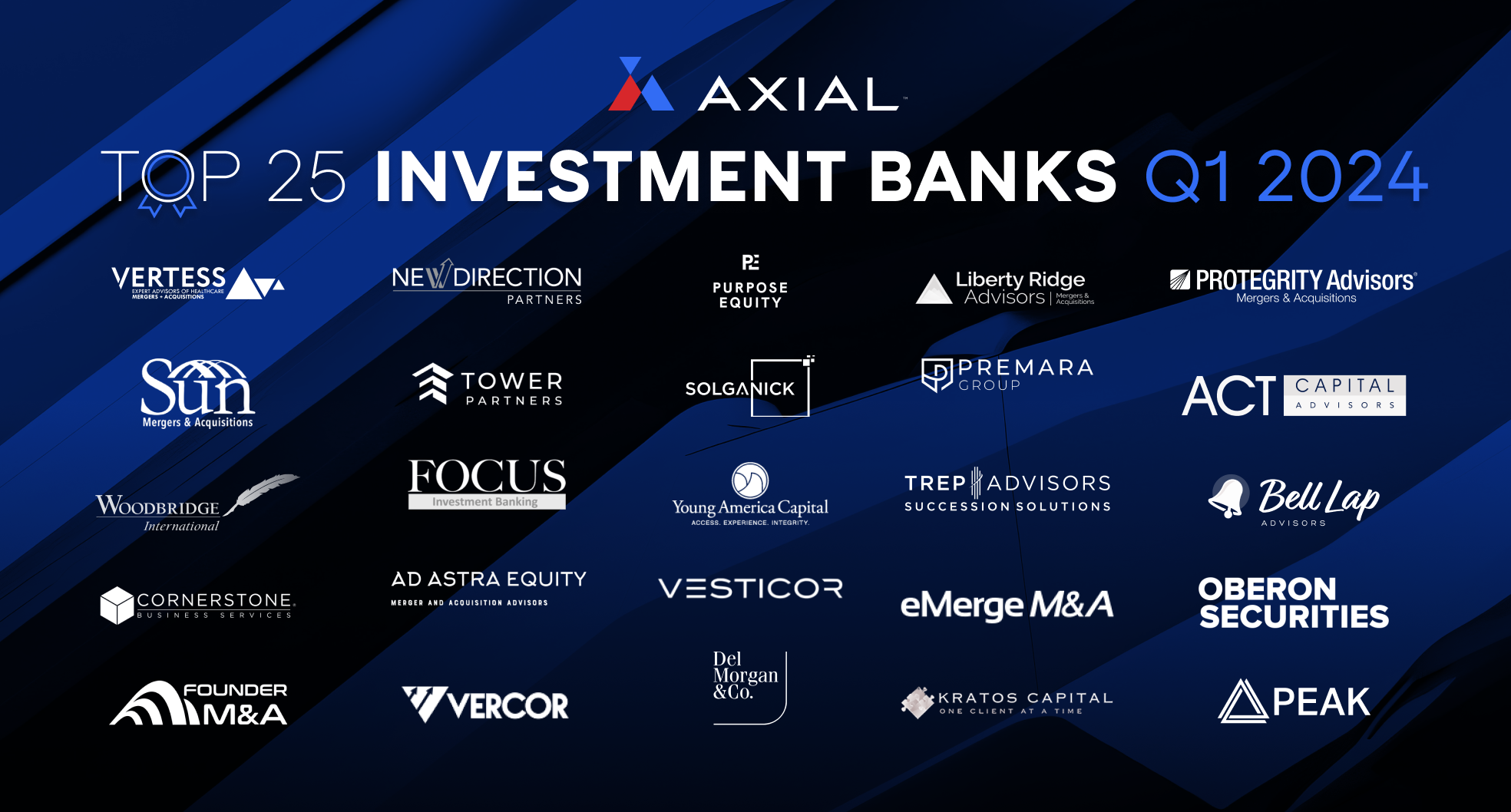
Top 25 Lower Middle Market Investment Banks | Q1 2024
Axial is excited to release our Q1 2024 Lower Middle Market Investment Banking League Tables. To assemble this list, we…
In part 2 of this 3-part series, we debunk some outdated concepts held by the investment banking world, specifically M&A bankers. Part one was on private equity, and next week’s final installment will be on CEOs.
Bankers like to project supreme confidence that they know the buyers for a company. After all, projecting that confidence helps win them over clients. It might have been true once, but in the lower middle market, it is no longer possible. The market is too fragmented and ever-changing to keep up. First, let’s face some of the numbers:
Bankers tend to be enthusiastic users of CRMs and information services, but those solutions are not enough. While senior bankers rarely admit it, most associates (i.e. the brains who actually create the buyer lists) will acknowledge how incomplete a view of the market they really have, and how many assumptions they make.
Your CRM gives you a window into only your own interaction history. The databases like Pitchbook or Capital IQ give you a window into announced deals. What about deals chased but not closed, or even closed but not announced? And if you are only looking into the past, how do you discover new strategies and new entrants? Yes, a creative banker could have guessed that Satya Nadella (Microsoft’s CEO) might buy Github where Steve Ballmer would have not, but Microsoft is a highly-analyzed entity. You can’t do that across 30,000+ possible entities.
To create a repeatable method for discerning the best buyers, the industry needs access to reliable real-time data on who is interested in what, how strategies are changing, and even where people are working (since that in itself creates a complex moving target). No single solution has conquered this yet. Arguably, Axial is the furthest along in gathering real-time intent, but we’ve just scratched the surface.
Ultimately, it takes just one additional motivated buyer to transform a sale process for the better in terms of outcome and negotiating leverage. I’ve lived it too many times across the many deals I worked as a banker at Broadview/Jefferies and my own exits as an entrepreneur/CEO (1 in software, 2 in IT services).
While not universal, it surprises me how many bankers still hold onto this concept. This premise was grounded in the fact that strategics had a lower cost of capital and could use synergies to justify a higher price. Further, strategics were not as beholden to private equity’s typical ~20% IRR targets to justify a deal, and thus not as prone to “tap out” at the same level.
Another contributing factor to the bias towards strategics came from the sellers themselves. Business owners often feel more comfortable talking to other operators, and private equity as a field did itself no favors by gaining a reputation — deserved or not — for use of excessive leverage, value creation purely through financial engineering, and flips.
When pressed, most bankers will acknowledge that some strategics can be far cheaper than financial investors. Nor do I want to over-simplify things down to just price. The ability to remain a standalone business, the ability to preserve upside equity in the business and get a second bite at the apple, or simply the desire to take advantage of a specific value-add a financial investor can bring — any of these reasons and more could steer a seller away from strategics.
It certainly was the truth 20-plus years ago, when I was first an M&A analyst, that strategics usually beat out financial investors for a deal. It’s not true anymore — not with PE firms owning 1.6% of US GDP [BCG].
Urgency and hunger tend to be the greatest driver for a buyer’s willingness to compete for a deal. These are often highest when someone is entering a space, either because of a new strategic direction or a new financial mandate. The unknown unknowns are often where great opportunity lies, even if that only takes the form of a useful stalking horse. Past is not prologue, and the whole industry needs a better way to understand the true real-time intent of the buy-side. It’s not solved, but we’re working on it.
About the author: Giff Constable is the VP of Product at Axial. Previously, he sold 3 lower-middle-market software and tech services companies as CEO, and was an investment banker at Broadview/Jefferies.